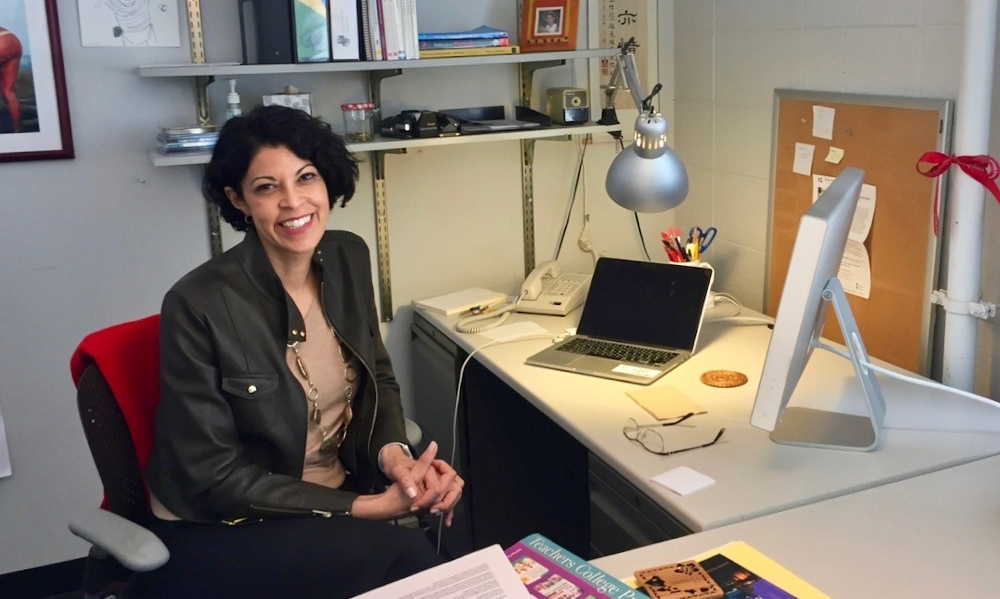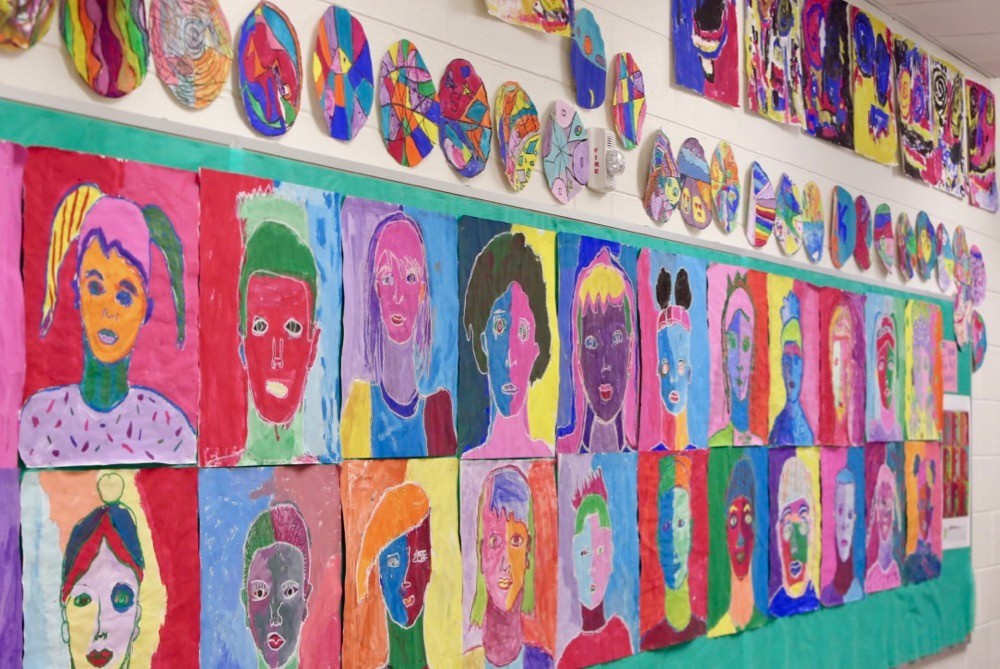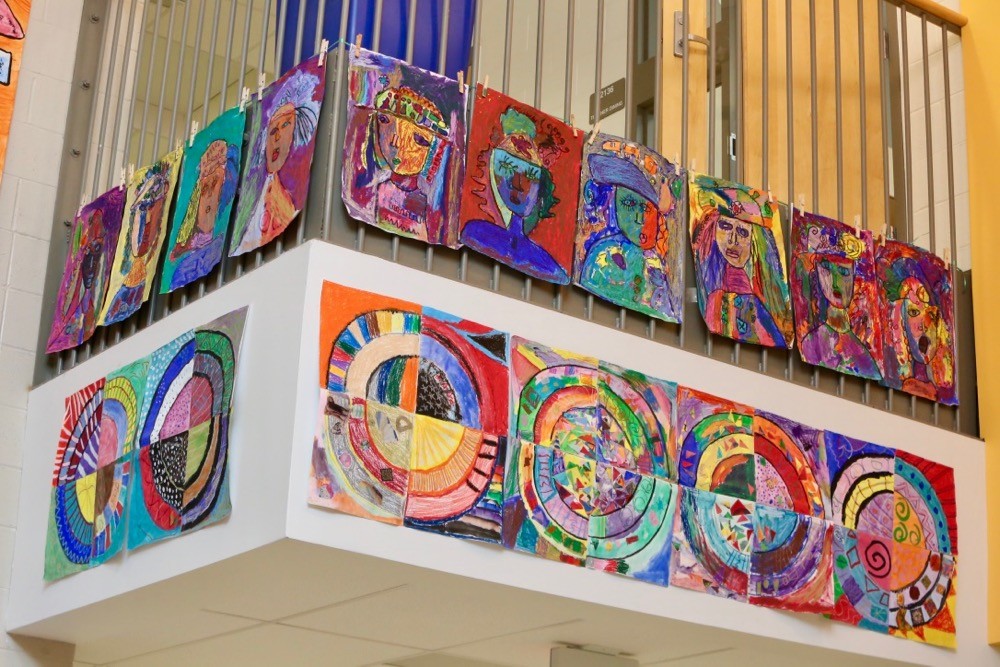UC DAAP professor Flavia Bastos was recently named chairperson of the Council for Policy Studies in Art Education, a 60-member forum for the examination of ideas impacting the character and function of art education.
The art of leading
UC DAAP professor of art education earns honor as chairperson of the Council for Policy Studies in Art Education, a scholarly think tank aimed at leveraging the critical value of K-12 and college art education.
By Melanie Schefft
513-556-5213
Photos provided
June 5, 2018
Arts instruction has been sidelined in many K-12 public schools in the 21st century based on budget cuts and increasing test-based assessments.
But Flavia Bastos, professor in the University of Cincinnati College of Design, Architecture, Art, and Planning school of art, sees a tremendous opportunity to change this attitude in her new role as chairperson of the Council for Policy Studies in Art Education (CPSAE) –– a group comprised of more than 60 elected academic art scholars across North America to explore ideas that impact the character and function of art education.
As a visual arts educator, Bastos makes it her life’s mission to help people from all walks of life and at all ages understand how art speaks to them uniquely –– to make art a part of everyone’s lives.
“I really think the role of arts education lies in that space where you combine creativity and imagination and just the best of human potential with very refined thinking and skill development,” says Bastos. “Art education is the place of imagination in schools where what doesn’t yet exist can take shape.”
Formed in the 1960s by Elliot Eisner, an influential Stanford University professor of art education, the council became what he described as a forum for the examination of ideas that impact the character and function of art education. During that time, the National Endowment for the Arts and the National Endowment for the Humanities split, reducing art to what Bastos referred to as a “making” practice rather than a “thinking” practice.
Founder Eisner quickly began highlighting the connections between art education and other disciplines believing art education should influence the way education happened in this country, rather than the other way around, says Bastos.
Colorful art adorns the walls of Woodford Paideia Academy, a Cincinnati magnet school offering the Paideia teaching style –– an example of how art, dance and music can help students find their voice and pursue their aspirations through developing critical thinking and creative problem solving skills.
Realizing a need for an elected group of strong intellects with an appetite for discussion and analysis of the educational system, Eisner created the group to have deep, professionally oriented and scholarly conversations.
As a result of those conversations, Bastos says she is now looking at how to make the council and its members, arguably some of the top educators in the field, more of an activist body — a think tank that can get ideas out in a variety of ways.
“When I was first asked to be chair I asked myself how do I plan to do this, as this is not a group to be led. It’s a group to be facilitated or unleashed,” she says. “The intelligence around the table is pretty staggering so I don’t want ideas to be censored in any way. There’s room for tremendous possibilities.”
One such opportunity, she sees, is to increase awareness of the critical value of arts in not only K-12 education but also college and private sector business.
For example, Amazon’s headquarters is one of a growing number of companies that has an artist-in-residence program on site for employee consultation. Bastos says they give the artist an office to be there during working hours so employees can come in and chat, make art with the artist or simply talk about the creative process.
If this conjures up an image of a walk-in clinic for employees with writer’s block, that’s not far off the mark.
“If a company like Amazon can see the value of supporting an artist, then other institutions and organizations can also see the value of this new cultural change,” says Bastos.
“I see my election as a positive development. While there have been a number of women directors, I am the first Latina to be elected to chair.”
‒ Flavia Bastos, professor of art education, UC DAAP
As a member of the Council of Policy Studies in Art Education, Bastos received the Ziegfeld Award of the International Society for Education through Art in 2009 for her distinguished service in international art education and in 2007 received the Mary J. Rouse Award of the National Art Education Association Women’s Caucus. Bastos is the former director of the Higher Education Division of the National Art Education Association.
Also past director of the Art Futures Program –– “a community-based partnership that prepares local youth through the process of socially engaged art to consider professional careers and college opportunities” –– Bastos says the most poignant thing about the arts is that it touches everybody’s lives.
“I think the role of art education is to help provide a place where what doesn’t yet exist can take shape,” says Bastos. “Kids can imagine a future that is not here yet, and art education can show them how they have the tools to go craft that future.”
Just as lots of people who have never been to a chemistry lab still interact with chemistry on a daily basis, the same is true for art. “We all interact with art more than ever now with all the digital devices from which we access visual sources. It’s about revealing those connections and being more aware of them,” she adds.
“Many people say creativity is problem solving, but creativity is really about finding the problems that haven’t been addressed. Its problem revealing, it’s problem identifying, uncovering the problems we haven’t discovered yet.”
‒ Flavia Bastos, about the value of art education
While students in art classes develop techniques such as mixing colors, drawing forms or creating balance, Bastos says they are also taught a remarkable array of mental habits not highlighted in other courses.
Developing visual-spatial abilities, reflection and self-criticism, research skills and the motivation to experiment and learn from mistakes are all critically important skills in many careers but largely ignored by current standardized tests.
Just like observing that which is in front of you, Bastos says envisioning something that is not there yet is a skill with benefits far beyond the art world. As chairperson of the CPSAE, Bastos hopes to continue translating the importance of artistic skills such as observation, expression, persistence and exploration into general education everywhere.
“What the council can do is mine all this wealth of experience in art and education and translate that into what art can do to create meaning in life for everyone.”
Interested in a career in art?
Explore UC’s College of Design, Architecture, Art, and Planning and apply as an undergrad or graduatestudent.



